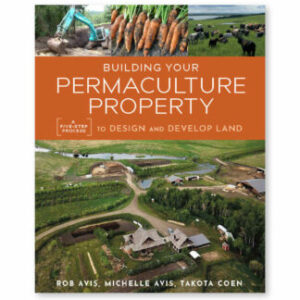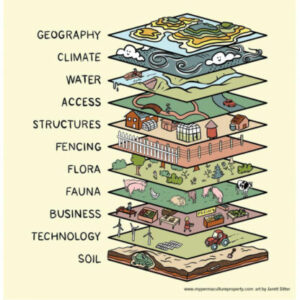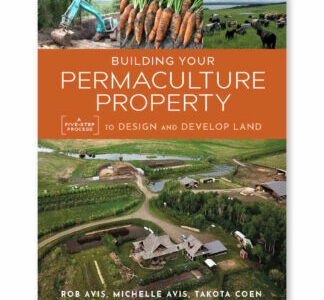Both of us come to this property with significant familiarity with permaculture. Jasmine was involved in permaculture properties and meetings in Portland, before coming to Hawai`i and receiving training at Evening Rain Farm under Scott Middlekauf. Diga has lived in Hawai`i since 1994, being involved on several permaculture-influenced properties, although heʻs never taken a permaculture design course. Over the course of his decades here, he has acquired significant hands-on experience and familiarity with tropical food-growing. Add to that mix Norris, our on-site permaculture designer who has experience both in Portland and Hawai`i, and you have a good meeting-of-the-minds to generate a design on a new property.
We decided to work with Avis, Avis, and Coenʻs Building Your Permaculture Property which provides a practical methodology for approaching a particular property, rather than the more broadly oriented founding books in this discipline. Our first work was to clarify our goals, values, and vision.

We quickly decided that we should determine the carrying capacity of the land and to plan to accommodate that number of people as potential community co-founders, even if we eventually decide to move to larger land. This led us to determine potential dwelling-sites, helping to dial in the permaculture zones and to avoid having to eventually remove valuable trees planted in the wrong places.
We also busied ourselves creating an inventory of the landʻs resources, and our personal resources. These are held in a file structure in our privately-networked land project organizing open source software, Joplin.

Between Joplin and InkScape, weʻre able now to record data and events (like seasonality of flowering and fruiting of the various plants on the property, the location/date of a particular planting, or precipitation totals), keep a running tab on various projects, generate agendas for our weekly permaculture meetings, track action items, and access infrastructure information like the specifications of the photovoltaic system or the warranty information on appliances.
Weʻll be fleshing out this database over time, and accumulating knowledge that will make land-management decisions easier. For instance, as we learn what specific months the landʻs current producing avocado trees yield fruit, we can choose additional cultivars to plant which fruit during any barren times, to round out this crucial, potentially year-round, crop.


